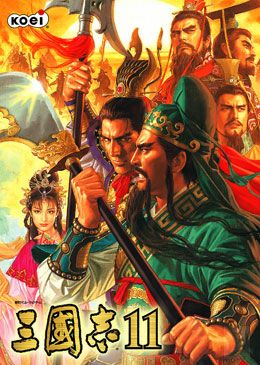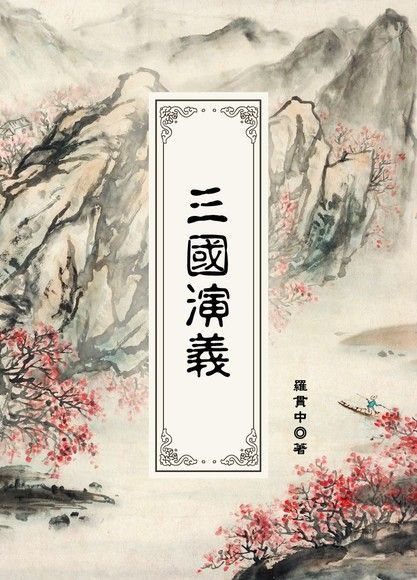Who made Kong Ming travel through time and space to become a "party coffee"?
Author: Cheng Weiheng (member of "Storytelling on the Frontier of the Empire")
Recently, a set of Japanese animation "Party Cafe Kongming" became popular in China and Japan, causing heated discussions. The story describes that after the death of Zhuge Kongming in the Three Kingdoms period, he suddenly traveled through time and space and came to Shibuya, Japan in the 21st century. Then Kong Ming met Yingzi, a woman who dreamed of becoming a singer, and decided to serve as a military adviser again to help Yingzi realize her dream.
In the play, how Kong Ming traveled through time and space to Japan is a "soft setting" plot that does not require detailed explanation. Anyway, the audience only needs to know that he has traveled through. However, how Kong Ming traveled through time and space to Japan is actually a question worthy of our consideration, and the discussion of this question may start from history and popular culture.
The Three Kingdoms era is undoubtedly one of the most well-known Chinese dynasties in the Greater China region today. Liu Bei, Guan Yu, Zhang Fei, Cao Cao, Sun Quan (10,000 people will be deleted below) and other historical figures, I believe everyone knows it. The reason why the Three Kingdoms era is so deeply rooted in the hearts of the people is probably closely related to the popular literary generation (such as dramas and games) that borrowed a lot from its historical background. The simulation strategy game "Three Kingdoms" launched by the Japanese game manufacturer Glorious is definitely the representative work of the contemporary Three Kingdoms. In 1985, Glorious launched the first generation of "Three Kingdoms". Today, this game has been launched for 14 generations. As of 2020, it has sold 8 million sets, which shows the popularity of the game.

We can’t help but ask a question, in the long history of thousands of years in China, why did the glory and animation “Party Ga Kong Ming” choose the Three Kingdoms as the theme, rather than the Spring and Autumn and Warring States, Five Dynasties and Ten Kingdoms and other war-torn periods as the theme? This starts with the Romance of the Three Kingdoms.
There are many stories about the Three Kingdoms: Taoyuan's marriage, borrowing arrows on grass boats, and war with Confucian scholars one after another, all of which are familiar to everyone. In fact, they are all literary stories, not real historical events. Even "Three Kingdoms", a game named after the famous historical book "Three Kingdoms", was also influenced by the literary works of the Three Kingdoms, adding a lot of fictional plots as game content. It can be said that the truly influential works of the Three Kingdoms are all fictional literary works, and "Romance of the Three Kingdoms" is undoubtedly the most influential literary work of the Three Kingdoms.
Japanese scholar Jin Wenjing once analyzed the book "Romance of the Three Kingdoms" to readers in his book "The World of the Romance of the Three Kingdoms". You may be quite familiar with every character and plot in the book, but you must not know much about the story of the book itself.

At present, everyone thinks that the author of Romance is Luo Guanzhong, but Jin Wenjing pointed out that this is an inaccurate statement, because strictly speaking, Luo Guanzhong is just a "organizer", because many of the stories in the book were actually circulated among the people early on, and Luo Guanzhong was only a Collect these stories and revise them into a novel. Therefore, the background of "Romance of the Three Kingdoms" is more complicated than we imagined, and it is definitely not a work conceived and created by the author alone like a contemporary novel.
As early as the Tang Dynasty, some people have used the Three Kingdoms to create works, such as Du Fu's "Shu Xiang" and Du Mu's "Red Cliff" two Tang poems, but to really make the Three Kingdoms popular among the people, it should start in the Song Dynasty. In the Song Dynasty, there was an entertainment venue called "Washe", which specialized in entertainment such as opera and "talking" (that is, storytelling).

Later, with the gradual popularization of papermaking and printing, some people began to record the content of "speaking" in written form, and then organized it into a book to sell to the audience, including "Three Kingdoms Zhiping", a book that influenced "Three Kingdoms". After that, some people began to spread "Three Kingdoms Zhiping Hua" to readers in the form of "storytelling". In this way, the story of the Three Kingdoms was passed on to Luo Guanzhong's ears in different forms and different media.
Although Luo Guanzhong "arranged" "Romance of the Three Kingdoms", we can't see the original version of this book today, because this book has been revised from the Ming Dynasty to the Qing Dynasty, and the final version should be the version of Mao Zonggang of the Qing Dynasty. In other words, "Romance of the Three Kingdoms" is a book that spanned a long period of time and was the brainchild of many editors. It can be imagined that the whole of China loved this book at that time, otherwise so many people would not have bothered to edit this book.
"Romance of the Three Kingdoms" is not only popular in China, but also successfully out of the circle and spread to North Korea, Japan and other places. According to Jin Wenjing, "Romance of the Three Kingdoms" was introduced to Japan in the 17th century at the latest, becoming the first full-text translation of a foreign novel, which shows that this book is also loved by the Japanese. Like the Chinese, the Japanese have absorbed the stories of the Three Kingdoms, and then re-created them. Many Japanese novels and dramas containing the plot of the Three Kingdoms and incorporating Japanese elements were born.

To this day, the Three Kingdoms is still one of the most popular creative themes in Japan, such as the game "Three Kingdoms" mentioned above, the animation "Party Cafe Kongming", or the comic "Three Kingdoms" by the famous Japanese cartoonist Yokoyama Guanghui. The Japanese continue to use the theme of the Three Kingdoms to create, and even in turn affect the Chinese people's love for the Three Kingdoms. Taiwanese historian Gan Huaizhen once shared an interesting anecdote . One of his electrical engineering students became interested in the Three Kingdoms because of the game "Three Kingdoms".
It can be seen that what really made Kong Ming successfully travel through time and space and reach contemporary Japan is the enthusiasm of people in each era for the creation of the Three Kingdoms, and the audience who are willing to continue to appreciate these stories. Whether it is more old-fashioned storytelling, novels, dramas, or relatively new comics, animations, and games, it is precisely because many creators have integrated the Three Kingdoms theme into new media with the changing times that the Three Kingdoms theme has endured for a long time. During this long history of creation of the Three Kingdoms, a group of loyal fans of the Three Kingdoms have been cultivated, and their existence has further supported the creators in creating the Three Kingdoms.
It can be foreseen that the story of the Three Kingdoms will only be passed down to future generations in the future, thanks to the endless stream of creators and their readers. It turns out that as long as there are good creations, there will be readers' support, and with the support of readers, there will be good creations again.
#Number of articles: 1️⃣2️⃣8️⃣
*This article is also published in the new issue of "On the Media" on paper
Like my work? Don't forget to support and clap, let me know that you are with me on the road of creation. Keep this enthusiasm together!



